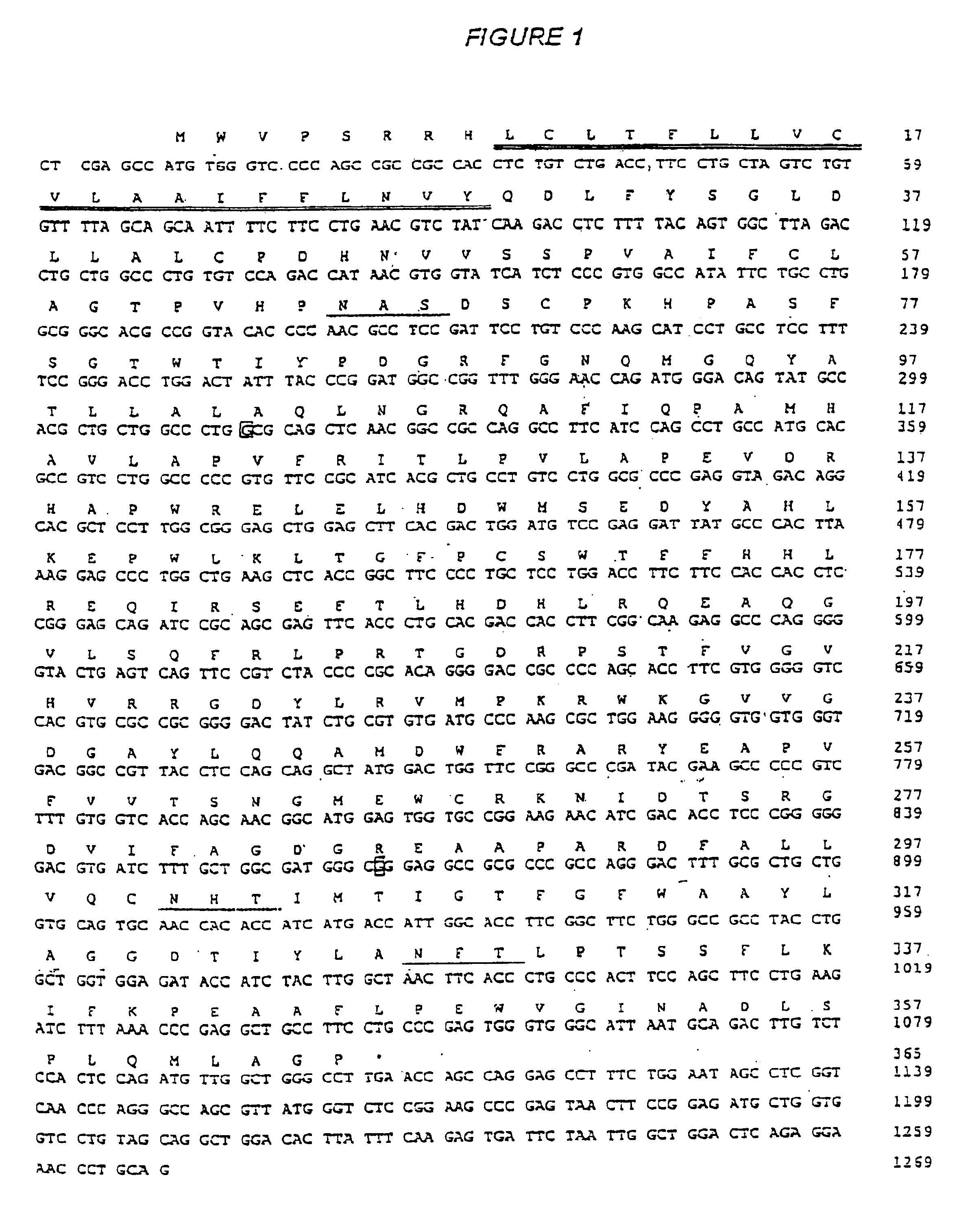Methods to identify swine genetically resistant to F18 E. coli associated diseases
a technology of f18 e. coli and associated diseases, which is applied in the field of methods to identify swine genetically resistant to f18 e. coli associated diseases, can solve the problems of keeping them disease-free, unable to identify resistant animals using the first two methods, and unable to achieve the effect of identifying resistant animals
- Summary
- Abstract
- Description
- Claims
- Application Information
AI Technical Summary
Benefits of technology
Problems solved by technology
Method used
Image
Examples
example 1
An Assay For Resistant Swine
[0036]The polymorphisms of the present invention are easily identified using PCR-RFLP tests. One embodiment of the tests used a 160 bp fragment of porcine alpha (1,2) fucosyltransferase 1 amplified using PCR with the following primers; 5′CCAACGCCTCCGATTCCTGT3′ and 5′GTGCATGGCAGGCTGGATGA3′. (SEQ ID NO :2) Preferred PCR conditions for this embodiment are 25 cycles at the following times and temperatures: 94° C., 30 sec; 60° C., 45 sec; 72° C., 90 sec. The amplified DNA from resistant swine was digested by the restriction enzyme Hgal, but was not digested by the restriction enzyme HinPI. The amplified DNA from homozygous susceptible swine was digested by the restriction enzyme HinPI. The amplified DNA from heterozygous susceptible swine was partially digested by both enzymes.
[0037]Alternatively, DNA was isolated from porcine nucleated cells according to standard procedures. Direct sequencing of porcine FUT1 and FUT2 sequences and their flanking regions in an...
example 2
Sensitivity and Specificity Of An Assay Using Alpha (1,2)
Fucosyltransferase In Detecting Swine Resistant to F18 E. coli
[0038]A study was conducted to determine the association between disease resistance and the polymorphism at position 307 of the FUT1 gene. 183 weaned swine (ranging in ages 2-6 months) were obtained from six different breeding herds. Only one of these herds was known to contain resistant animals before the start of the study, and this herd is known to have a high incidence of porcine stress syndrome. The other 5 herds had no evidence of porcine stress syndrome, and the incidence of disease resistance was unknown. Swine from each herd were randomly selected, humanely euthanized and spleens and samples of small intestine were removed. DNA was extracted from splenic tissue and used in a PCR-RFLP assay described in Example 1. Intestinal cells were purified by scraping the mucosal surface off the intestine, lysing the cells in a hypotonic EPTA solution and washing by ce...
example 3
Localization of FUT1 on Chromosome 6 (SSC6)
[0039]Cosmids ETHs1, −s2, −s3, −s4 and −s6 were identified after screening of the cosmid library with a FUT1 nucleotide probe obtained from porcine genomic DNA with primers P7 and P10 and were mapped by FISH and DISC-PCR to chromosome 6 in band q11.
PUM
| Property | Measurement | Unit |
|---|---|---|
| temperatures | aaaaa | aaaaa |
| resistance | aaaaa | aaaaa |
| microscopic adhesion test | aaaaa | aaaaa |
Abstract
Description
Claims
Application Information
 Login to View More
Login to View More - R&D
- Intellectual Property
- Life Sciences
- Materials
- Tech Scout
- Unparalleled Data Quality
- Higher Quality Content
- 60% Fewer Hallucinations
Browse by: Latest US Patents, China's latest patents, Technical Efficacy Thesaurus, Application Domain, Technology Topic, Popular Technical Reports.
© 2025 PatSnap. All rights reserved.Legal|Privacy policy|Modern Slavery Act Transparency Statement|Sitemap|About US| Contact US: help@patsnap.com

